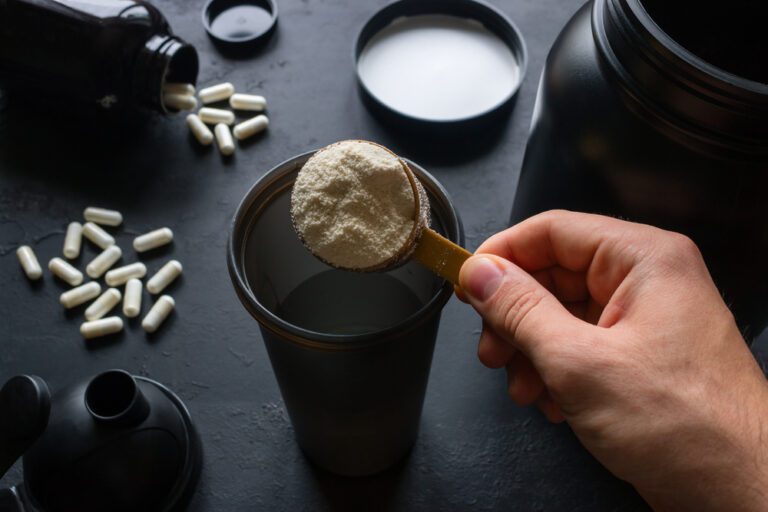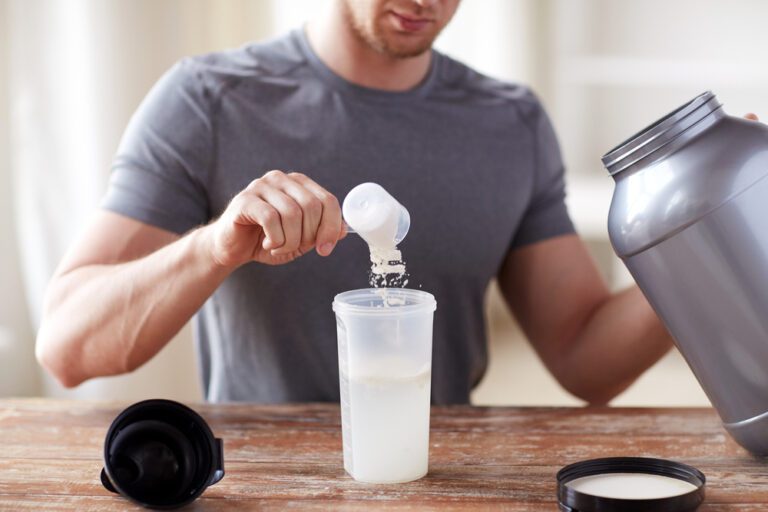A cold water plunge, also known as cold therapy, is exactly how it sounds: plunging yourself into cold water. Why? Immersing yourself in water temperatures below 60°F is shown to have several potential therapeutic benefits. In this article, we will explore the details about a cold water plunge, its history, how it works, and its potential health benefits and risks. That way, you can decide if you want to take the plunge into ice water.
Key Takeaways
- Cold water plunges can help soothe and rejuvenate muscles, boost circulation, increase energy, and improve mental clarity and immune function.
- The practice has ancient roots, with cultures like the Greeks, Romans, and Japanese historically recognizing the health benefits of cold water immersion.
- Cold water plunges can enhance athletic performance by reducing muscle soreness and inflammation, speeding up recovery, and improving overall endurance and power. However, timing is crucial as immediate post-workout plunges might impede muscle growth.
What is a Cold Water Plunge?
Picture yourself completely immersed in icy cold without any gear to protect you from the uncomfortable elements. Staying in the frigid water becomes as much a mental challenge as a physical one, and you can feel your biological processes shifting into survival mode.
That’s exactly what happens when you embrace the invigorating practice of cold water plunges. These quick, therapeutic dips in icy waters are often sought after physical activities, praised for their ability to:
- Soothe and rejuvenate tired muscles
- Boost circulation
- Increase energy levels
- Improve mental clarity
- Strengthen the immune system
But the allure of cold plunges goes beyond a recent health and wellness trend. It’s an ancient ritual reborn in modern times. Let’s uncover the full spectrum of what a cold plunge can do for you and your health.
Understanding Cold Water Plunges
Cold water plunges, known also as cold plunging or cold therapy, have gained popularity as a method to test human resilience and promote health. But what exactly is this practice that dares us to submerge in frigid waters, and why do so many swear by its benefits? From the invigorating cold shock to the touted health perks, cold plunging is more than just a trend—it’s a deliberate cold exposure with a deep history.
Definition of Cold Water Immersion
Cold water immersion is a simple yet impactful practice where someone voluntarily sits in an ice bath hovering around 50-59°F for a few minutes. With water temperatures dipping as low as 40°F, the transformative cold plunge tub sessions can last up to ten minutes.
It’s a ritual that can be embraced daily, each plunge bringing its own set of challenges and rewards.
History and Origins
Our ancestors were the first to harness the power of cold water. The practice of cold plunging traces its roots back to ancient civilizations like the Greeks and Romans, who sought cold baths for health and rejuvenation. The Japanese, through the purification ritual of Misogi, stood under icy waterfalls for spiritual and physical cleansing, a testament to the enduring belief in cold’s curative properties. Nordic cultures too celebrated the vitality that came from ice swimming and winter bathing.
What Does a Cold Plunge Do?
Understanding how a cold plunge affects the body is key to appreciating its potential benefits. When you immerse yourself in cold water, your body undergoes a series of beneficial physiological changes. Some of these changes include:
- Blood vessel constriction
- Activation of brown fat (a type of fat that burns energy to generate heat, helping to increase metabolism and regulate body temperature)
- Increased production of endorphins
- Improved circulation
- Boosted immune system
- Reduced inflammation and muscle soreness
- Improved mood and sleep quality
These responses can lead to significant health improvements.
Blood Flow and Circulation
The shock of the cold causes blood vessels to constrict rapidly, directing blood away from the extremities and towards the core to preserve body heat and protect vital organs. This natural response can have a beneficial effect on cardiovascular health, potentially reducing blood pressure and enhancing blood circulation.
As the body adapts to the cold, the initial loss of strength and coordination gives way to a boost in overall blood flow and a decrease in heart rate, laying the groundwork for improved physical performance and endurance.
Cold Shock Response
Entering cold water triggers an involuntary ‘cold shock’ response. Your breathing quickens, your heart rate climbs, and your blood pressure surges. This response is more than just a jolt to the system; it’s a kickstart for the sympathetic nervous system, releasing norepinephrine and preparing the body to face the extreme cold. Adrenaline courses through your veins, priming you for action and heightening your body’s ability to cope with the sudden drop in temperature.1
Post-Cold Shock Adaptation
After the initial cold shock wears off, your body begins to adapt to the frigid environment, and several physiological changes take place. The rapid constriction of blood vessels that occurred initially starts to ease, allowing blood flow to gradually return to the extremities. This process can lead to a warming sensation as your body works to distribute heat more evenly.
Your heart rate, which spiked during the cold shock, begins to stabilize, and your breathing becomes more controlled and regular. This adaptation phase is crucial as it helps your body maintain homeostasis despite the cold stress.
Endorphins, the body’s natural painkillers, are released, providing a sense of euphoria and improved mood. This endorphin rush can contribute to a feeling of mental clarity and reduced stress, making the cold plunge experience not just physically invigorating but also mentally refreshing.2
Overall, as your body adapts to the cold, it transitions from a state of acute stress to one of enhanced resilience and well-being.
Activation of Brown Fat
Not all fat is created equal. Brown adipose tissue (BAT), unlike its white counterpart, acts as a natural furnace within the body.3 When activated by cold exposure, BAT kicks into gear, generating body heat through thermogenesis and countering the chill of the water. This not only helps keep you warm but also ramps up metabolic processes, contributing to weight loss and metabolic health.4
It’s a fascinating physiological adaptation that underscores cold water immersion’s potential role in maintaining a healthy body composition.
Health Benefits of Cold Water Plunges
From the physical to the psychological, the potential health benefits of regularly braving icy waters are as extensive as they are impressive. Whether it’s reducing muscle soreness, enhancing mental health, or giving your immune system a boost, cold plunges can be a cornerstone of good health and well-being.
Enhanced Recovery and Performance
Athletes have long turned to the cold for its restorative properties. Post-exercise, a plunge can speed recovery, reducing muscle fatigue and soreness.5 College soccer players, for instance, have shown basic improvements in post-sport recovery following cold water immersion therapy.
Further, when you immerse yourself in cold water after intense exercise, the cold constricts your blood vessels, which helps to reduce swelling and flush out metabolic waste products like lactic acid. This process enhances the delivery of oxygen and nutrients to your muscles, speeding up recovery and reducing muscle soreness.
Additionally, the cold temperature numbs the nerves, reducing pain and preventing further muscle damage. The result? A quicker return to training and improved power, strength, and aerobic endurance.
Reduced Muscle Soreness and Inflammation
The anti-inflammatory effects of cold water are not just for athletes. Immersion in cold water can significantly decrease inflammation and muscle soreness, making it a valuable tool for workout recovery. Hydrostatic pressure from the water helps reduce swelling and edema, while the constriction of blood vessels limits blood flow to inflamed areas.
Studies, including those on individuals with gout arthritis, have shown that cold plunging can effectively manage pain and inflammation, providing a natural and accessible means to alleviate discomfort.6
Improved Mental Health and Stress Reduction
Beyond physical benefits, cold water plunges can profoundly impact mental health.7 Immersion in icy waters has been shown to:
- Boost cognitive function
- Improve mood, offering temporary euphoria and long-term mental health benefits
- Restore resiliency and balance to the nervous system
- Reduce symptoms of anxiety and depression
While evidence of improved sleep quality is largely anecdotal, the benefits of cold plunges indicate that they could be a powerful ally against the stresses of modern life.
Boosted Immune System
Cold water plunges may be a secret weapon for your immune system. The shock of the plunge activates immune responses, and studies have shown that even cold showers can reduce sick days by 29%.8 By promoting lymphatic drainage and increasing white blood cell count, cold water exposure enhances overall immune function.
Regular plunges can build resilience against common ailments like colds and flu, offering a natural pathway to fortify your body’s defenses.
What Are the Negatives of Cold Plunge?
While cold plunges can offer a wealth of benefits, it’s important to recognize they’re not for everyone. Startling as it may sound, the sudden plunge can spike blood pressure and heart rate to dangerous levels for those with heart conditions. Extended exposure can lead to hypothermia, syncope, and even disorientation.
Plus, for dedicated athletes, the very benefits of cold on recovery might compromise long-term performance improvements. It’s essential to weigh these considerations and consult a health professional if you have any concerns.
Cold Plunge Risks and Safety Precautions
Diving into the cold can be energizing, but it’s important to be aware of potential risks—especially for beginners or those with pre-existing conditions. Here’s what to keep in mind:
- Cold shock response: The sudden drop in temperature can cause rapid breathing, gasping, or panic. Practice deep, controlled breaths to help manage this.
- Respiratory issues: Conditions like asthma may worsen due to airway constriction in cold temperatures.
- Hypothermia: Prolonged exposure can cause your core body temperature to drop too low, leading to confusion, sluggishness, and impaired movement.
- Frostbite: Extended contact with icy water can damage skin and tissue, potentially leading to long-term injury.
- Irregular heartbeat: Cold exposure can impact heart rhythm, especially in individuals with underlying heart conditions.
- Heart muscle damage or heart attack: In rare but serious cases, extreme cold exposure can strain the heart.
Safety tips:
- Never plunge alone.
- Limit your time in the cold—especially as you’re starting out.
- Watch for early signs of numbness, excessive shivering, or mental fog.
- Choose a safe, clean environment where help is accessible if needed.
- Always listen to your body—if something feels off, it’s okay to step out.
Cold plunging can be incredibly refreshing and beneficial when done safely—just make sure you’re setting yourself up for a positive experience.
Who Should Not Do Cold Plunges
SpCertain medical conditions require careful consideration before attempting a cold plunge. For individuals with the following conditions, it’s essential to either avoid cold plunging or consult with a healthcare provider beforehand due to the potential for cardiovascular stress or other complications:
- Pre-existing heart conditions
- High blood pressure
- Diabetes
- Raynaud’s phenomenon
- Conditions affecting blood flow or circulation
- Respiratory conditions
- Pregnancy
- Hypersensitivity to cold
It’s crucial to prioritize your health and safety over the thrill of the experience. Always exercise caution and seek professional guidance to ensure that cold plunging is suitable for you.
Impact on Resistance Training
For resistance trainers, the timing of a cold plunge can be critical. While cold water can reduce inflammation post-workout, it may also impede muscle recovery and growth if used immediately after resistance training. By damping down the molecular signaling pathways activated by exercise, cold water may hinder long-term improvements in muscle strength and mass.9
Thus, timing your cold plunges strategically is essential for maintaining the balance between recovery and muscle development.
Timing Cold Plunges with Resistance Training
Here are some tips to optimize the timing of your cold plunges:
- Post-Workout Delay: Wait at least 4-6 hours after resistance training before taking a cold plunge. This delay allows your muscles to initiate the repair and growth processes triggered by your workout.
- Non-Training Days: Consider scheduling your cold plunges on non-training days. This strategy ensures that you reap the recovery benefits without interfering with muscle development.
- Morning Plunges: If you prefer daily cold plunges, doing them in the morning can invigorate you for the day ahead without conflicting with your evening resistance training sessions.
- Listen to Your Body: Pay attention to how your body responds to different timing strategies. Everyone’s physiology is unique, so adjust your cold plunge schedule based on your recovery and performance needs.
By thoughtfully timing your cold plunges, you can maximize both recovery and muscle growth, ensuring that you get the most out of your resistance training regimen.
Practical Tips for Cold Water Plunging
If the benefits of cold plunges have piqued your interest, you might be wondering how to start. It’s a journey that requires preparation and mindfulness. From the right environment to warming up strategies post-plunge, let’s look at some practical tips that will help you safely navigate the icy waters and make the most of your cold water immersion experience.
How Long Should You Sit In a Cold Plunge?
Dipping into cold water can feel intimidating at first, so it’s important to ease into it. If you’re just starting out, try keeping your sessions between 30 seconds to 2 minutes. That might not sound like much, but it’s more than enough to get the benefits while letting your body adjust. With consistent practice, you can gradually work up to 3–5 minutes—just make sure you’re never pushing past what feels safe.
To get a feel for your cold tolerance, begin with cold showers. Alternating between warm and cold water can help your body start to adapt without the full shock of a plunge. When you do transition to a full-body cold dip, enter the water slowly and focus on deep, controlled breathing. That initial jolt is totally normal, but breathing through it can help calm your nervous system and make the experience more manageable.
Remember, this isn’t a race. Everyone’s response to cold is different, and tuning in to your body is key. If you feel anything beyond the usual cold discomfort—like numbness, dizziness, or extreme shivering—it’s time to get out and warm up. Cold plunging is a personal practice, and progress happens over time. Let your body lead the way.
Where Do You Cold Plunge?
The environment for your cold plunge is just as important as the plunge itself. It should be clean, safe, and somewhere you feel totally comfortable. That could be as simple as a bathtub at home filled with cold water and a few bags of ice, the cold plunge in the Raw Athletic Recovery Room, or as adventurous as jumping into a chilly lake or the ocean.
Take advantage of our cold plunge in the Recovery Room for a guided experience, or invest in your own plunge tank—some of which, with all the high-end features, can run up to $20,000. Whatever route you take, the most important thing is that you feel secure and relaxed in the space. That way, your body can focus on the cold, not your surroundings.
For those living in the Port St. Lucie area in Florida, we have state-of-the-art cold plunge tubs in a relaxing, private room for our members at Raw Athletic Club.
Whichever environment you choose, make sure it’s one that will contribute positively to your cold water immersion experience.
How to Warm Yourself Up After Being in Cold Water
After braving the cold, it’s crucial to warm up properly. Wrapping up in a towel and donning warm clothes are the first steps to stabilizing your body temperature. A gradual warm-up process, such as taking a warm shower or using heated towels, can help your body adjust without experiencing a drastic temperature shift.
Movement is also key. Light physical activity, such as jumping jacks, squats, or jogging in place, helps increase blood flow and naturally generate body heat.
Summary
As discussed, the journey through frigid waters offers more than a chill; it’s a path to enhanced recovery, improved mental health, and a fortified immune system. While the plunge is not without its risks, with the right precautions and a gradual approach, it can be a transformative experience. Embrace the cold, respect its power, and you may just find a refreshing new addition to your wellness routine.
Frequently Asked Questions about Cold Plunges
How cold should a cold plunge water be?
The water temperature for an effective cold plunge should typically range from 50-59°F (10-15°C), though some experienced plungers may prefer temperatures as low as 37.4-39°F (3-4°C). These cooler temperatures can help reduce muscle soreness, improve circulation, boost the immune system, and increase energy levels. When starting out, aim for durations between 30-90 seconds to allow your body to adjust and reap the benefits of the cold plunge safely.
How long should I stay in the cold water during a plunge?
Start with 30 seconds to one minute and gradually increase the time; seasoned plungers can stay in for up to 10 minutes. Start slow and gradually build up your tolerance for the cold.
Can cold plunges make you lose weight?
Cold water plunges can stimulate your body to burn more calories by activating brown fat, which can aid in weight loss. However, they aren’t a quick fix for shedding pounds. While the cold does ramp up your metabolism, the effects are generally modest and should be seen as a complement to, rather than a replacement for, a healthy diet and consistent exercise routine.
Are there any risks associated with cold water plunges?
Yes, there are risks such as increased blood pressure and heart rate, hypothermia, and fainting. If you have pre-existing medical conditions, it’s vital to consult with a doctor.
Should I take a cold plunge after every workout?
If your goal is to maximize muscle growth and strength gains, it’s generally recommended to wait at least four hours after a weight training session before cold plunging. This delay allows your body to go through the natural inflammatory process that’s essential for muscle repair and adaptation. Taking a cold plunge too soon after training can interfere with this process and potentially hinder muscle growth. If recovery and soreness relief are your main focus, however, you can enjoy the benefits of a cold plunge sooner, without worrying about affecting muscle development.
Sources:
- Tipton, Mike J. “The initial responses to cold-water immersion in man.” Clinical Science 77.6 (1989): 581-588.
- Yankouskaya, Ala et al. “Short-Term Head-Out Whole-Body Cold-Water Immersion Facilitates Positive Affect and Increases Interaction between Large-Scale Brain Networks.” Biology vol. 12,2 211. 29 Jan. 2023, doi:10.3390/biology12020211
- Muzik, Otto, et al. “Sympathetic innervation of cold-activated brown and white fat in lean young adults.” Journal of Nuclear Medicine 58.5 (2017): 799-806.
- Glickman, Ellen I., and Natalie Caine-Bish. “Changes in body temperature and basal metabolic rate of the Ama—a commentary.” Wilderness & Environmental Medicine 14.3 (2003): 191-192.
- Leeder, Jonathan DC, et al. “Cold water immersion improves recovery of sprint speed following a simulated tournament.” European journal of sport science 19.9 (2019): 1166-1174.
- Kurniasari, Maria Dyah et al. “Cold Water Immersion Directly and Mediated by Alleviated Pain to Promote Quality of Life in Indonesian with Gout Arthritis: A Community-based Randomized Controlled Trial.” Biological research for nursing vol. 24,2 (2022): 245-258. doi:10.1177/10998004211063547
- Shevchuk, Nikolai A. “Adapted cold shower as a potential treatment for depression.” Medical hypotheses 70.5 (2008): 995-1001.
- Buijze, Geert A et al. “The Effect of Cold Showering on Health and Work: A Randomized Controlled Trial.” PloS one vol. 11,9 e0161749. 15 Sep. 2016, doi:10.1371/journal.pone.0161749
Piñero, Alec, et al. “Throwing cold water on muscle growth: A systematic review with meta‐analysis of the effects of postexercise cold water immersion on resistance training‐induced hypertrophy.” European Journal of Sport Science (2024).



